Actively Bent Timber
Form finding and structural analysis of actively bent timber grid shells
B. D’Amico, A. Kermani, H. Zhang
Centre for Timber Engineering (CTE), School of Engineering and the Built Environment, Edinburgh Napier University, Edinburgh, UK
Grid shells are efficient structural systems covering large open spaces with relatively small amount of materials. Also, post forming techniques allow realization of geometrically complex (free-form) shapes by means of standard connection systems.
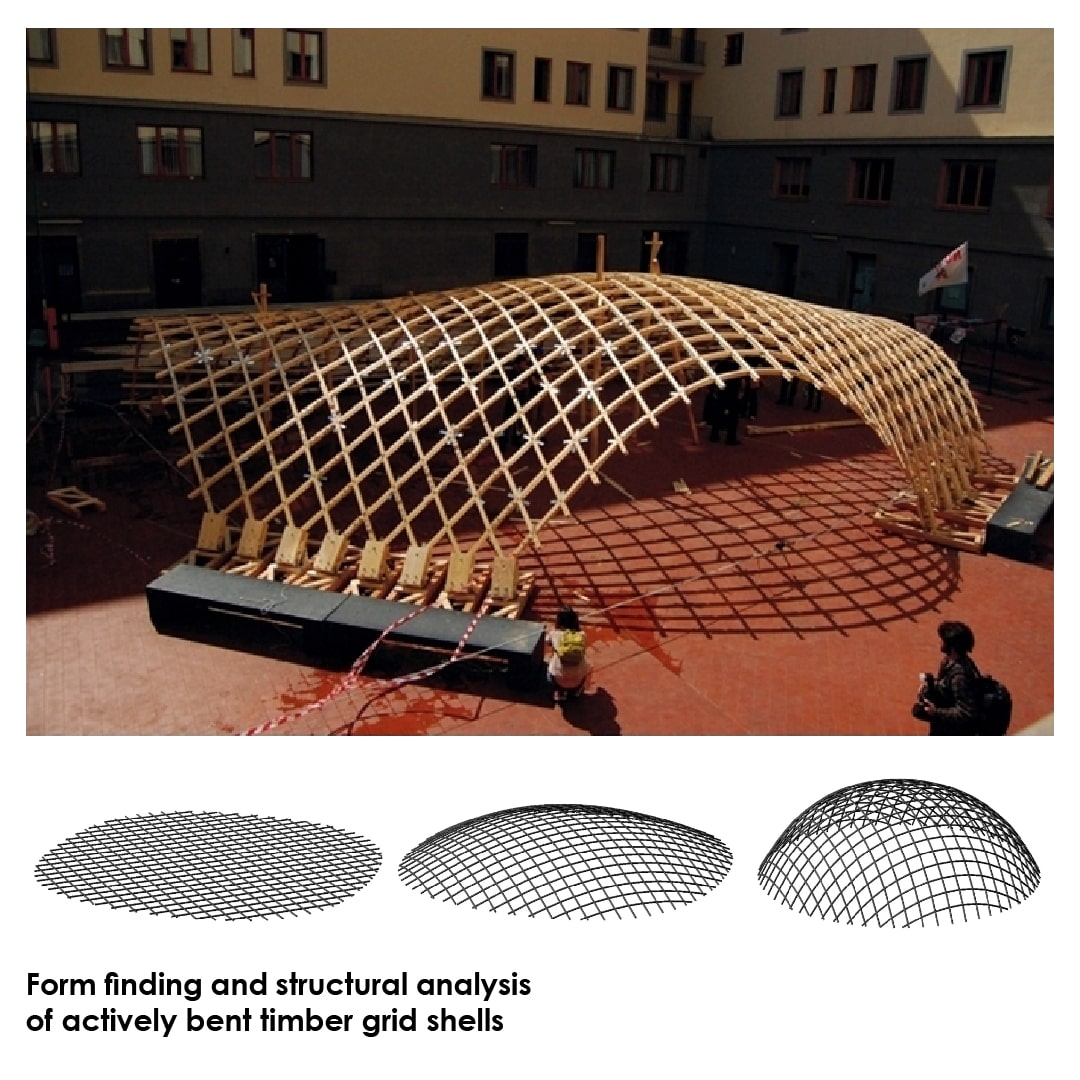 However, due to complexity of the analysis-design process, they are rarely utilized in construction design. In this paper, a ‘facilitating’ numerical framework is introduced in which, for a given continuous reference shape, a geometrically similar discrete model is found by implementation of a six degree of freedom formulation of the Dynamic Relaxation method, to handle members bending and torsional stiffness.
However, due to complexity of the analysis-design process, they are rarely utilized in construction design. In this paper, a ‘facilitating’ numerical framework is introduced in which, for a given continuous reference shape, a geometrically similar discrete model is found by implementation of a six degree of freedom formulation of the Dynamic Relaxation method, to handle members bending and torsional stiffness.
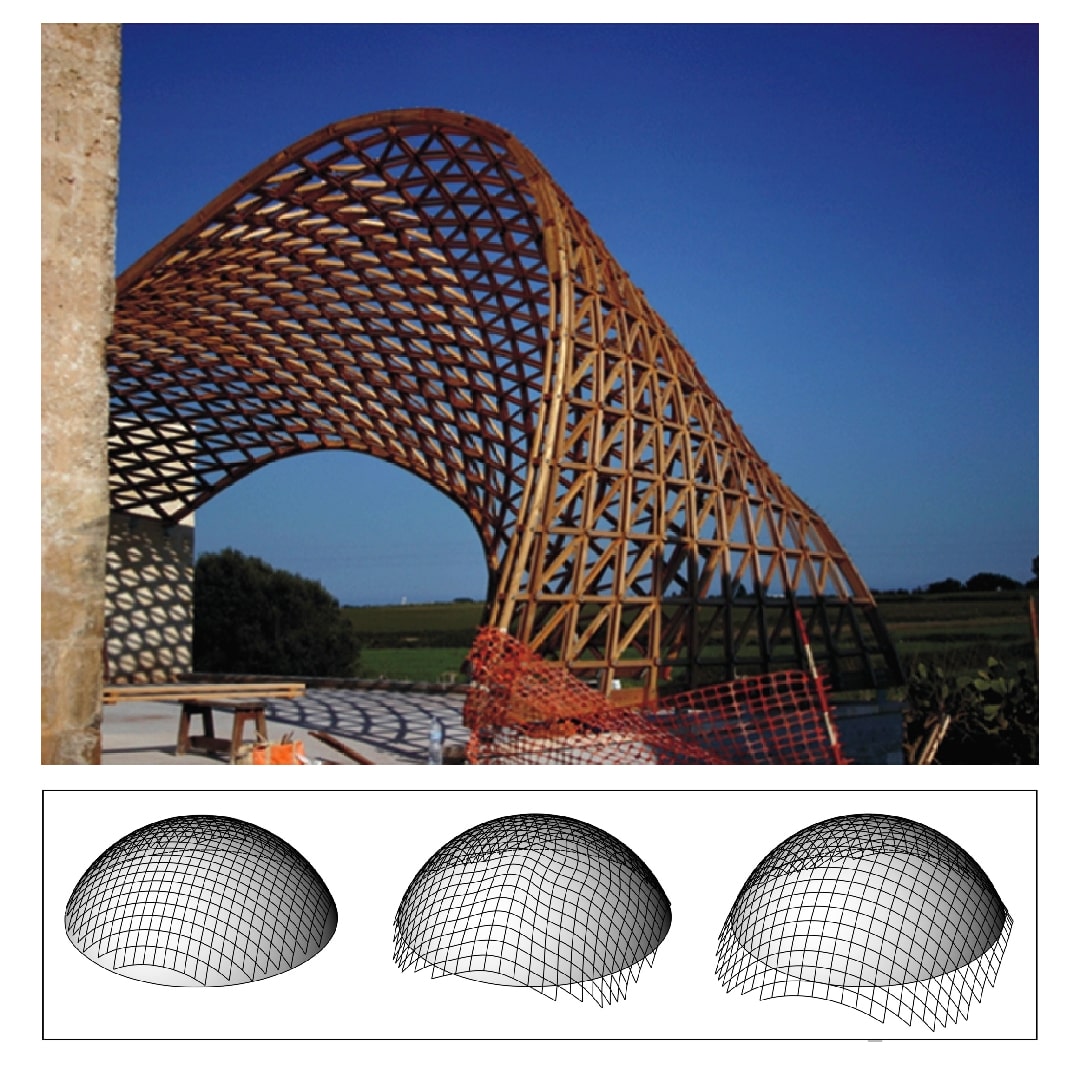 A grid cutting pattern algorithm is introduced, as well as methods to numerically simulate the double-layer construction technique and a novel (singlenode) cylindrical joint model.
A grid cutting pattern algorithm is introduced, as well as methods to numerically simulate the double-layer construction technique and a novel (singlenode) cylindrical joint model.
The methods are extensively tested and validated on a range of structures, from ‘simple’ single-rod cases to more complex, actively bent, grid shell frameworks.
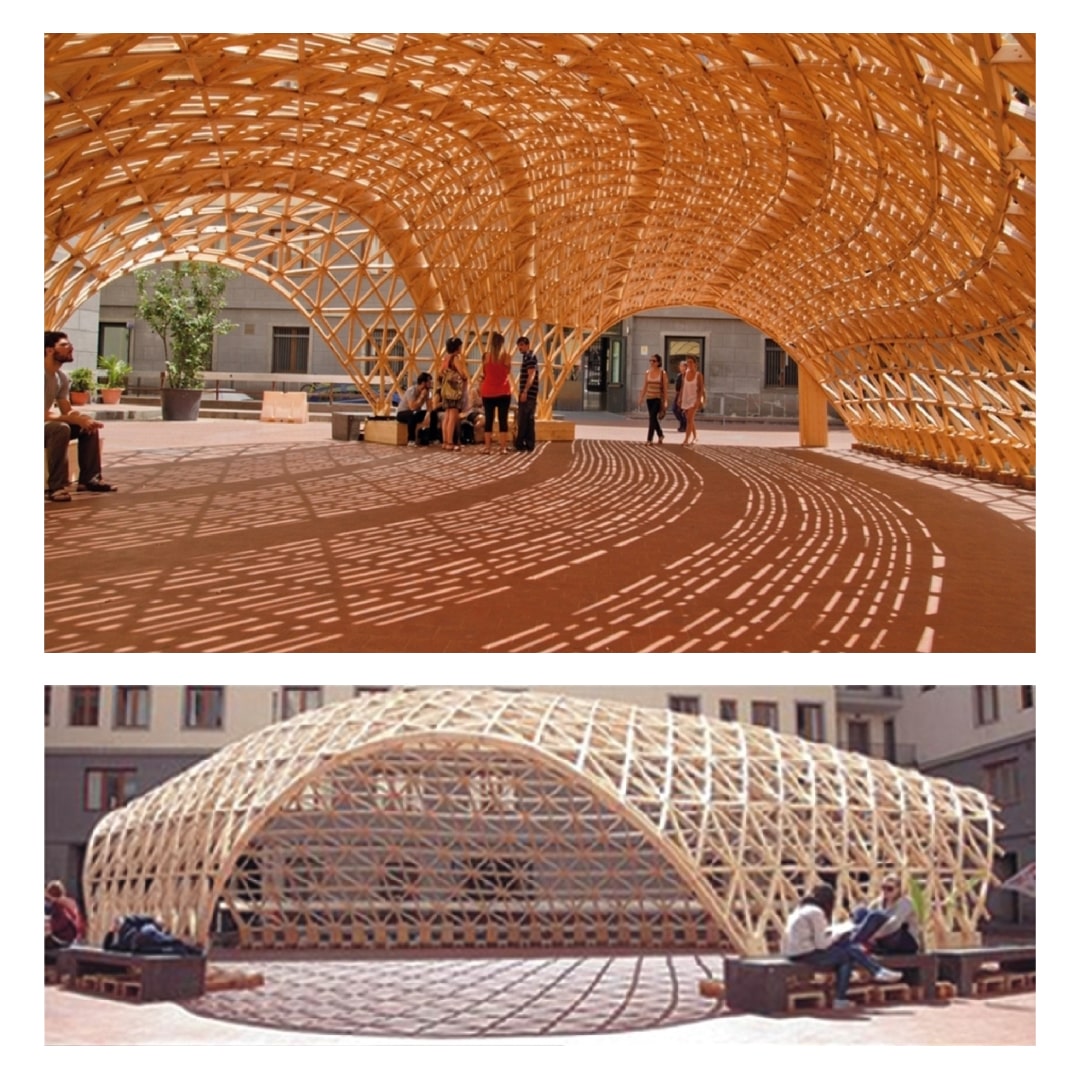 Free-form grid-shell structures can be formed by connecting short straight beam elements together into nodes thus converting a curved continuous surface in a faceted shell.
Free-form grid-shell structures can be formed by connecting short straight beam elements together into nodes thus converting a curved continuous surface in a faceted shell.
From a geometrical point of view, the described process deals with complex connection systems: Each element converges to the node of the grid at a different angle, thus non-standard connections (and Computer-Aided Manufacturing process) become inevitable.
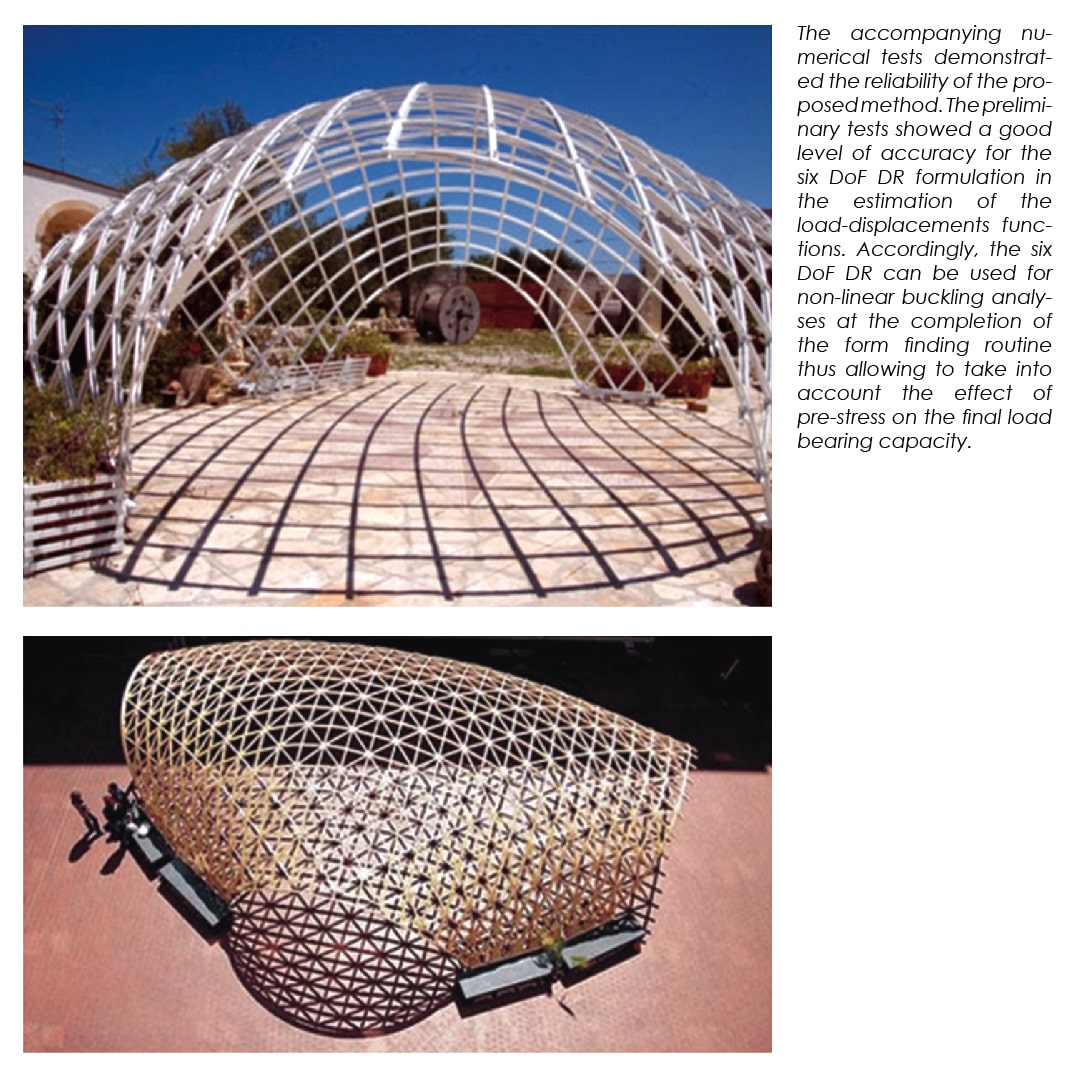 A ‘low-tech’ method for building free-form structures using standard (bolted/screwed) connection systems is by bending initially flat elastic rods, such as solid timber planks/laths, to form actual continuous curves.
A ‘low-tech’ method for building free-form structures using standard (bolted/screwed) connection systems is by bending initially flat elastic rods, such as solid timber planks/laths, to form actual continuous curves.
For timber grid shells made of continuous bending members, two subcategories can be defined differentiating on the geometric parameters assigned to generate a grid on a surface: If screwed laminated timber ribs are arranged following geodesic patterns the planks composing the rib will only be subjected to torsion and bending around the weak axis enhancing the ‘allowable’ width of the the plank’s cross section.
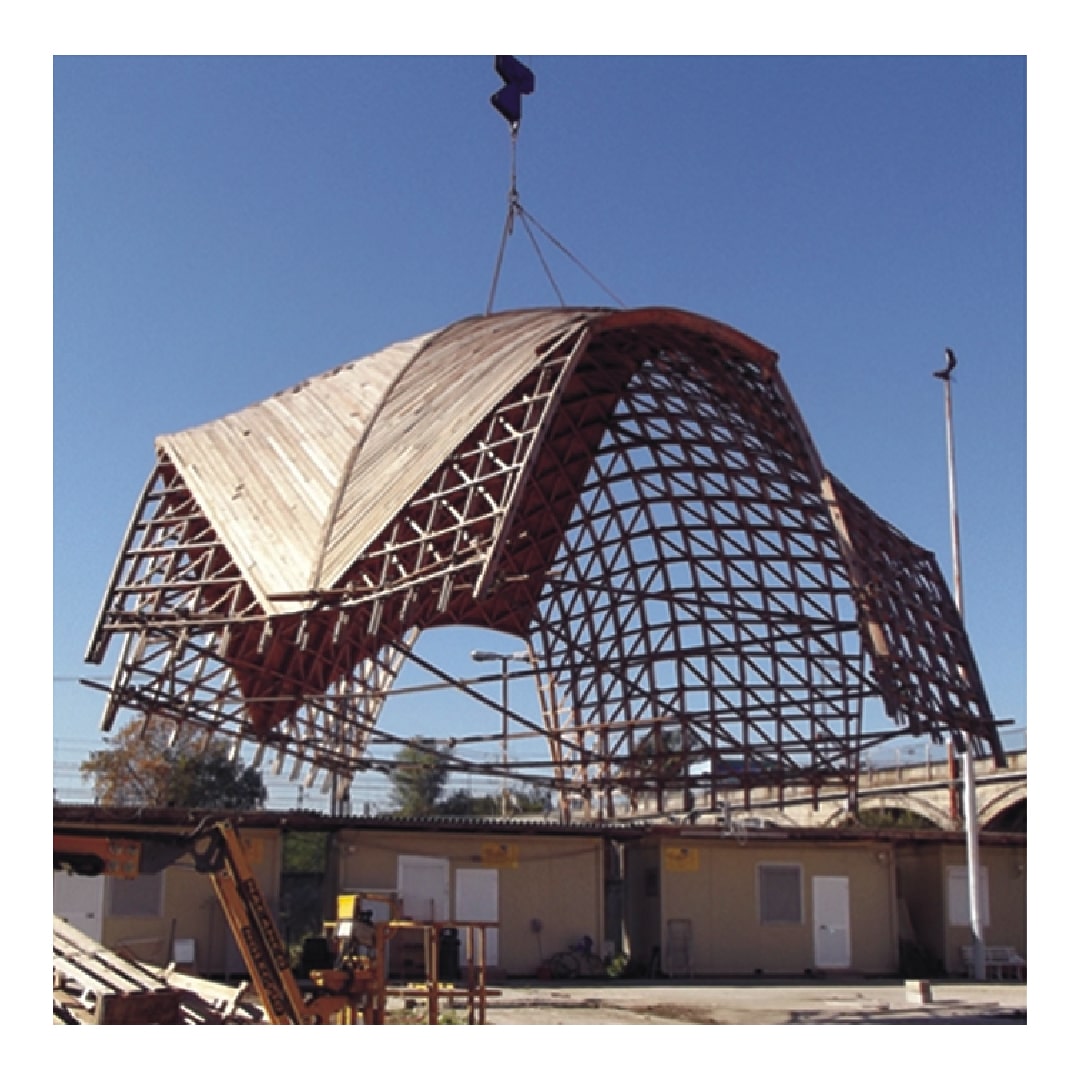 Provided an appropriate mass/time-increment ratio, the DR methods will always converge to an equilibrium configuration of minimum strain energy no matter how gross is the deformation of the initial grid on the reference surface.
Provided an appropriate mass/time-increment ratio, the DR methods will always converge to an equilibrium configuration of minimum strain energy no matter how gross is the deformation of the initial grid on the reference surface.
The work presented in this paper has aimed to facilitate the design of actively bent grid shells, with particular attention on the use of timber.
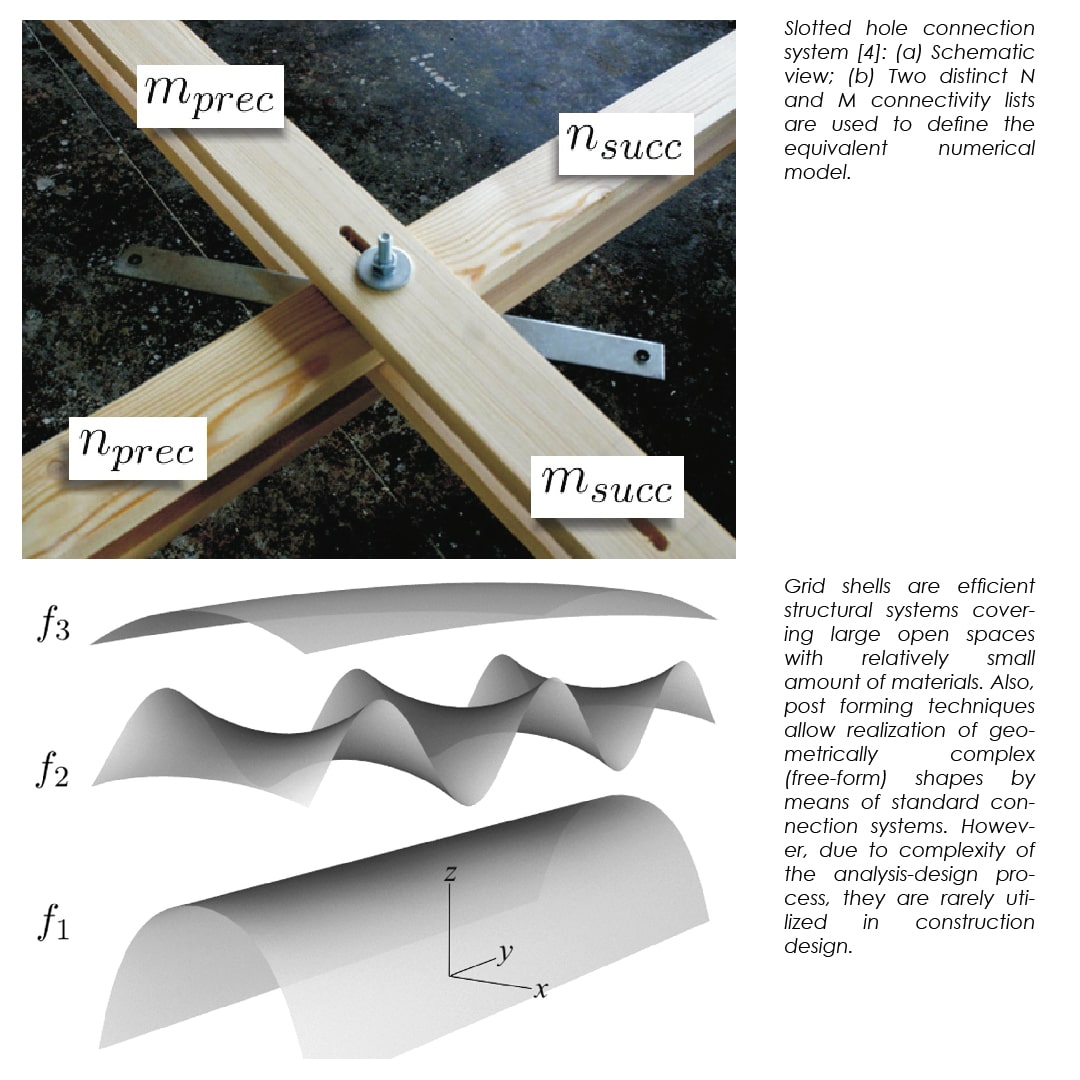 A numerical framework is developed to address a range of issues at various design stages, including, a viable form finding procedure, structural analysis and assembly definitions by combining finite element procedures with numerical methods typical of the computational geometry.
A numerical framework is developed to address a range of issues at various design stages, including, a viable form finding procedure, structural analysis and assembly definitions by combining finite element procedures with numerical methods typical of the computational geometry.
Further investigations, concerning the coupling of rotational degree of freedom, resulted in the development of a novel single-node numerical model for large rotation simulation of cylindrical joint systems.
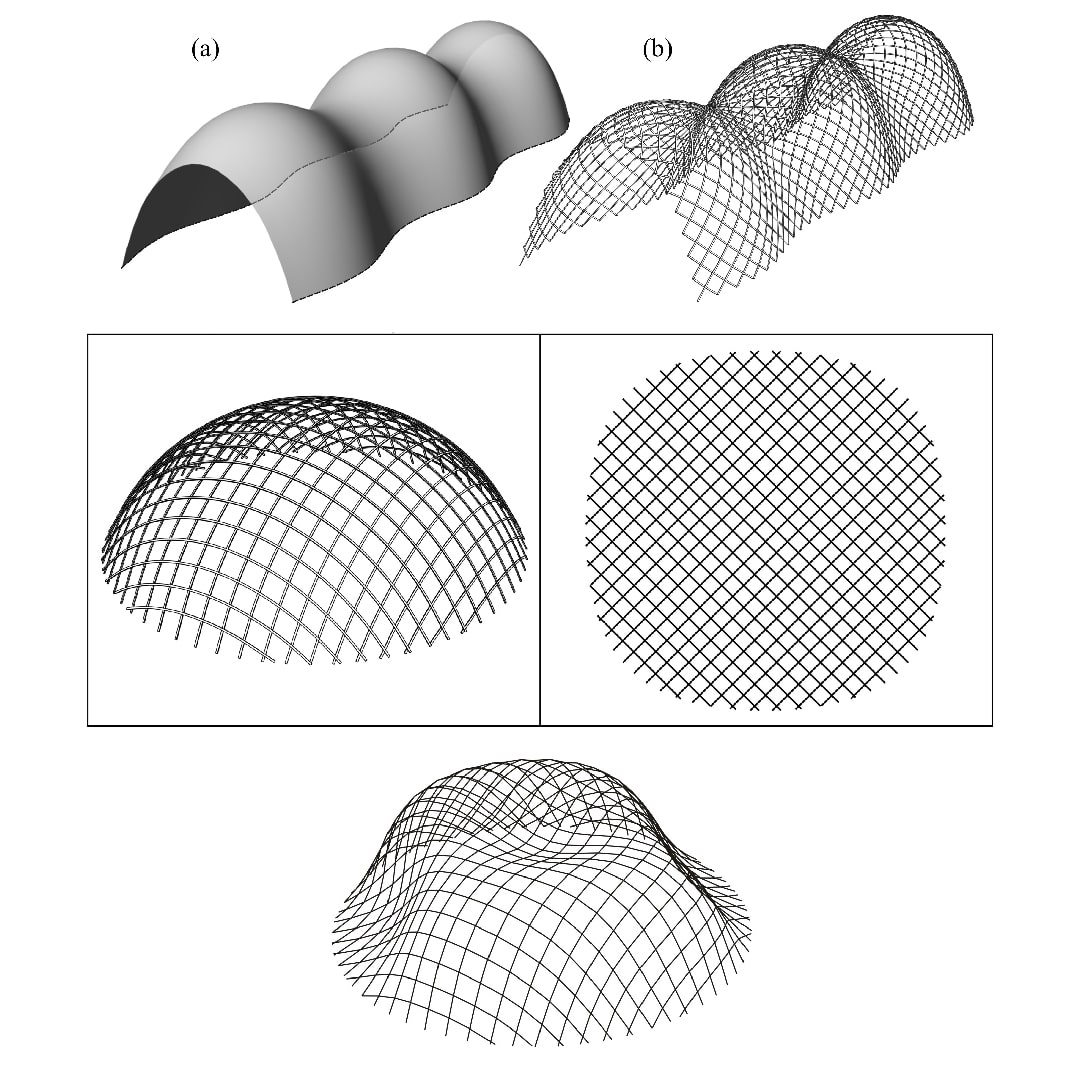 In addition, a procedure is illustrated to allow changing the element’s crosssectional properties during the completion of the form finding stage by maintaining the corresponding ends reactions values.
In addition, a procedure is illustrated to allow changing the element’s crosssectional properties during the completion of the form finding stage by maintaining the corresponding ends reactions values.
Such procedure permits load analyses in which the increase in stiffness of the built-up timber ribs is taken into account, and at the same time maintains the equilibrium configuration obtained without shear blocks.




























Comments